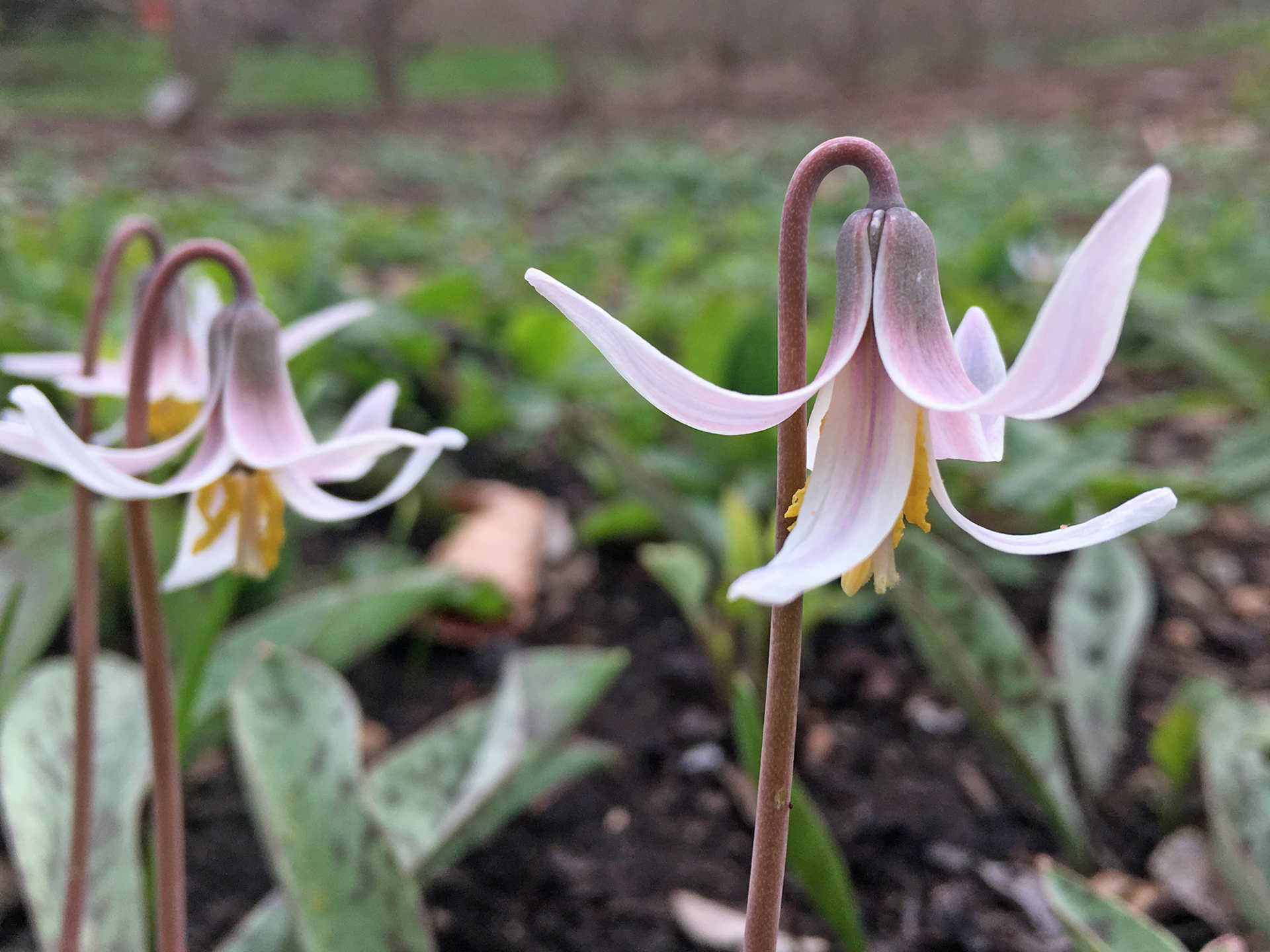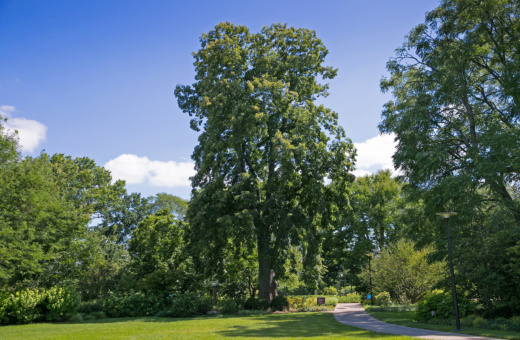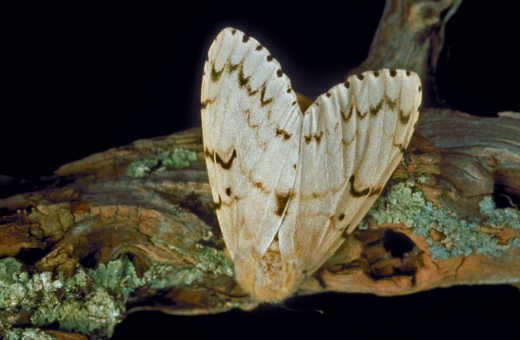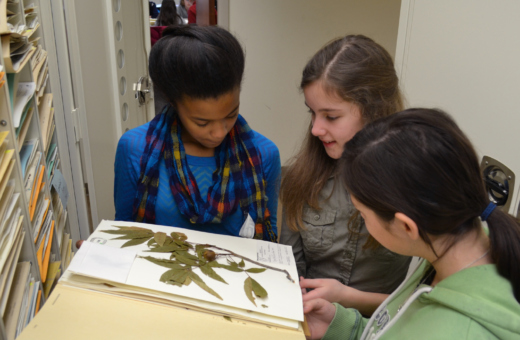Fleeting Beauty in the Woods
The spring display of bloom at The Morton Arboretum unfolds over months, from the first late-winter flowers of witch-hazel, through sweeps of deep-blue scilla and yellow daffodils, to crabapple blossoms in May. There’s an extra treat to be found if you walk along the wood-chipped trails in the woods: native ephemeral wildflowers.
These woodland plants have evolved to seize an opportunity, blooming before trees open their leaves to shade the forest floor. They need this fleeting boost of the sun’s energy for the important business of flowering, setting seed, and preparing for next year. Once the trees’ leaves are fully open and block the sun, the wildflowers will go into a sleeping dormant state, vanishing until next spring. That’s what makes them ephemeral.
The greatest variety of spring wildflowers grows in the Arboretum’s natural areas, where they are part of a healthy ecosystem that includes trees, animals, and soil microorganisms. Good spots to see them include the East Woods (parking lots 8 to 13) or the more secluded areas of the West Side such as Sterling Pond (Parking Lot 28).
Some of these plants flower early in spring and some later. Their exact bloom time is impossible to predict because it varies from year to year, depending on the weather. By mid-May, most are done. Check the weekly Spring Bloom Report for news on what’s in flower, or take regular walks in the Arboretum’s woods all through the spring to enjoy the procession of bloom.
To learn more, consider taking a class at the Arboretum, such as Identifying Woodland Wildflowers or a Spring Ethnobiology and Wildflower Walk. Here are some of the many spring ephemeral wildflowers to look for at the Arboretum.
Bloodroot
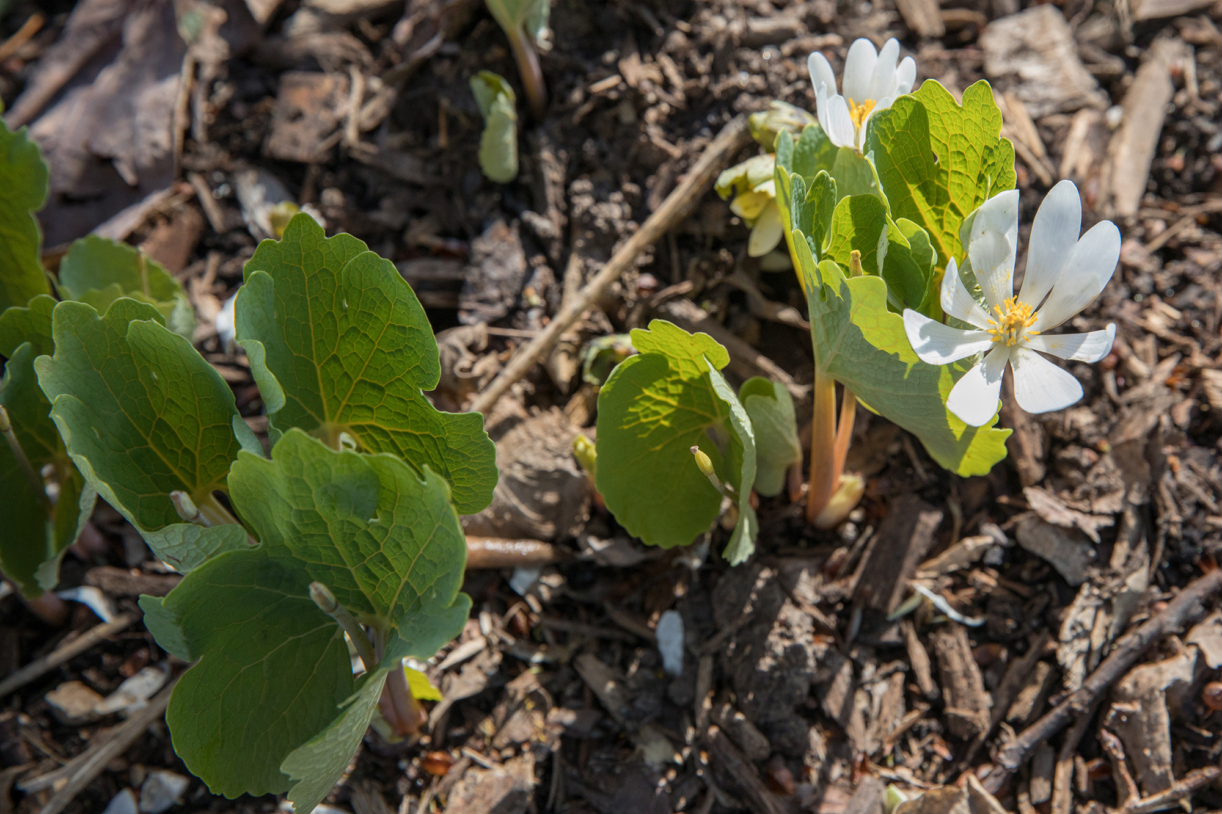
This early spring wildflower first sends up its leaves wrapped in tight tubes like green cigars. Then the leaves open to reveal flowers with white petals and fluffy yellow centers. Each flower lasts only a day or two, but the plant can keep blooming for up to two weeks, although the foliage lasts longer. The name refers to an acrid reddish juice contained in the stems and roots. The botanical name is Sanguinaria canadensis.
Dutchman’s Breeches
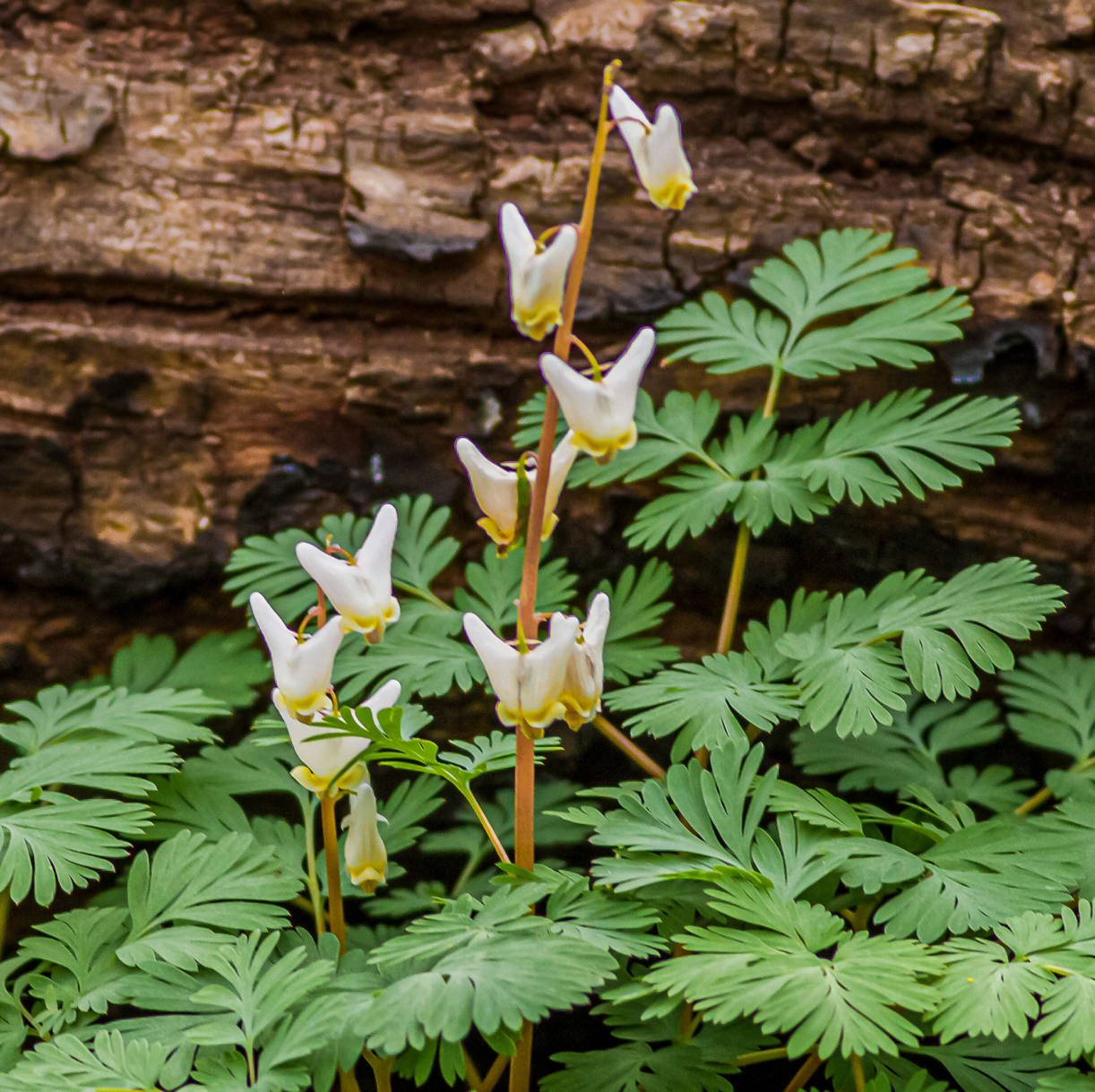
These striking flowers hang from upright stems above ferny leaves in mid-spring. The petals curve into a shape that, in the 17th century, looked to some people like the voluminous knee-length trousers often worn by Dutch settlers. The flowers bloom in early to mid-spring and usually last two or three weeks. The botanical name is Dicentra cucullaria.
White Trout Lily
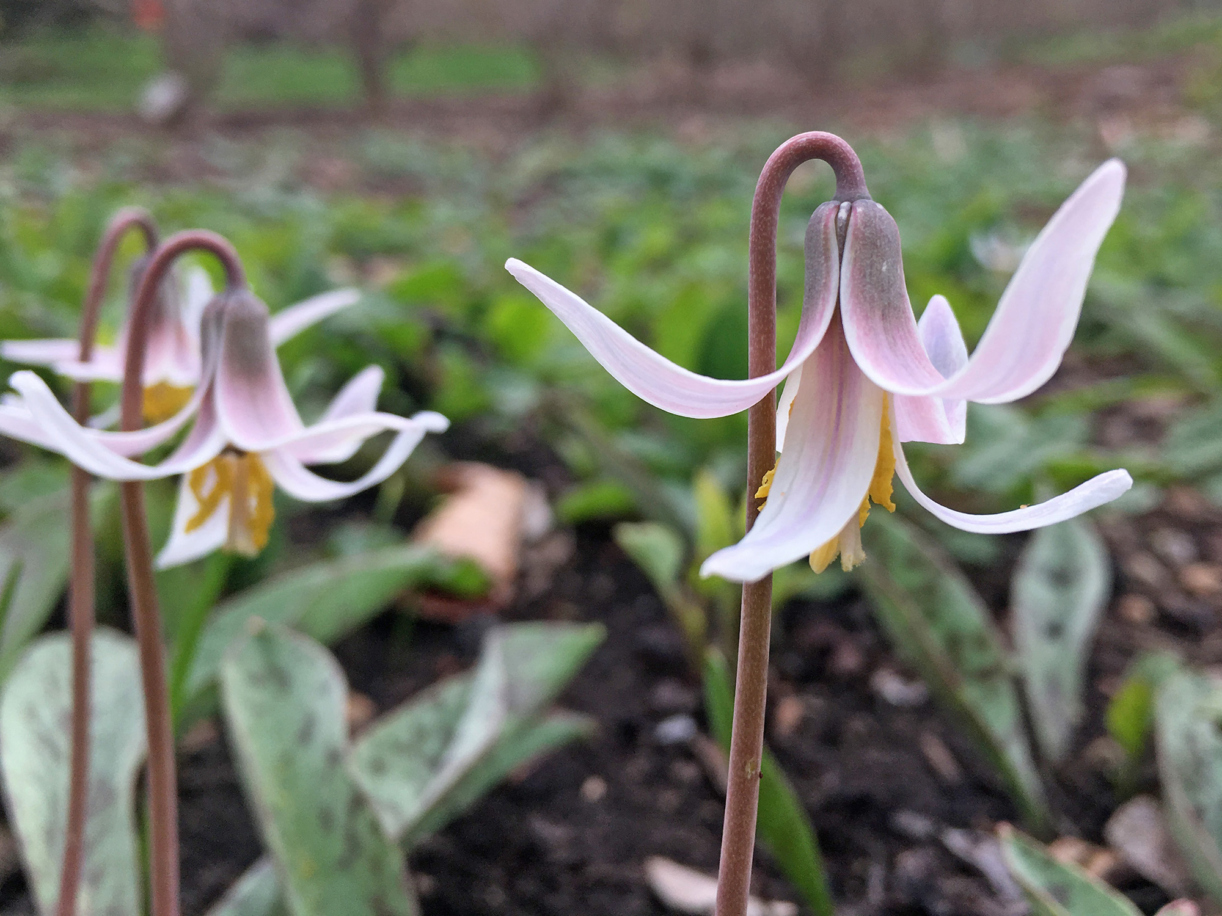
This plant gets its name from its leaves, which are mottled and vaguely fish-shaped. Its nodding white to pink flowers, on stems a few inches tall, look like miniature lilies. White trout lily blooms in mid-spring for about two weeks. The botanical name is Erythronium albidum.
Spring Beauty
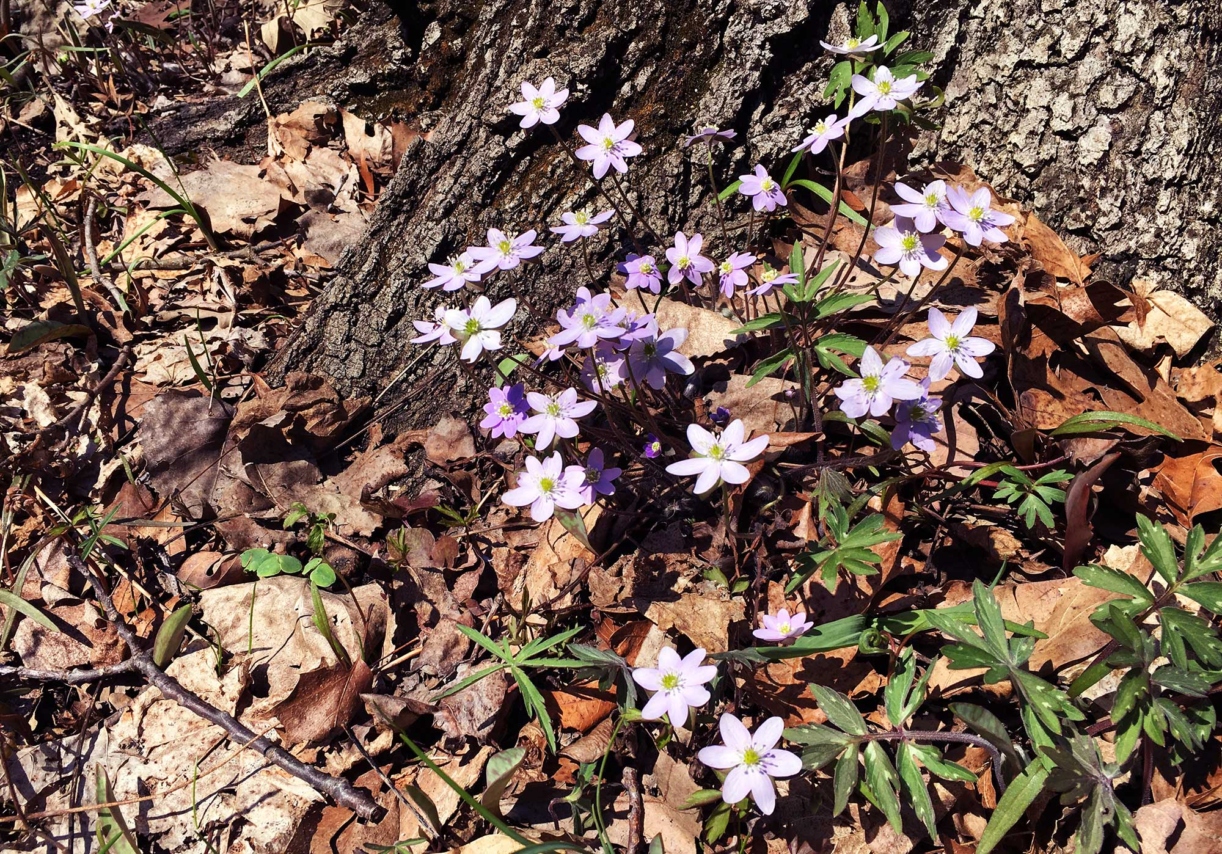
The small flowers of this low plant seem to sparkle among the leaf litter for two or three weeks in the middle of spring, often forming large colonies. If you look closely, you’ll see pink stripes on each white petal. They serve as landing paths, inviting insects to come and enjoy the flower’s nectar and, while they’re at it, distribute its pollen to other flowers. The delicate small flowers open on sunny days and close during cloudy weather. The botanical name is Claytonia virginica.
Virginia Bluebells
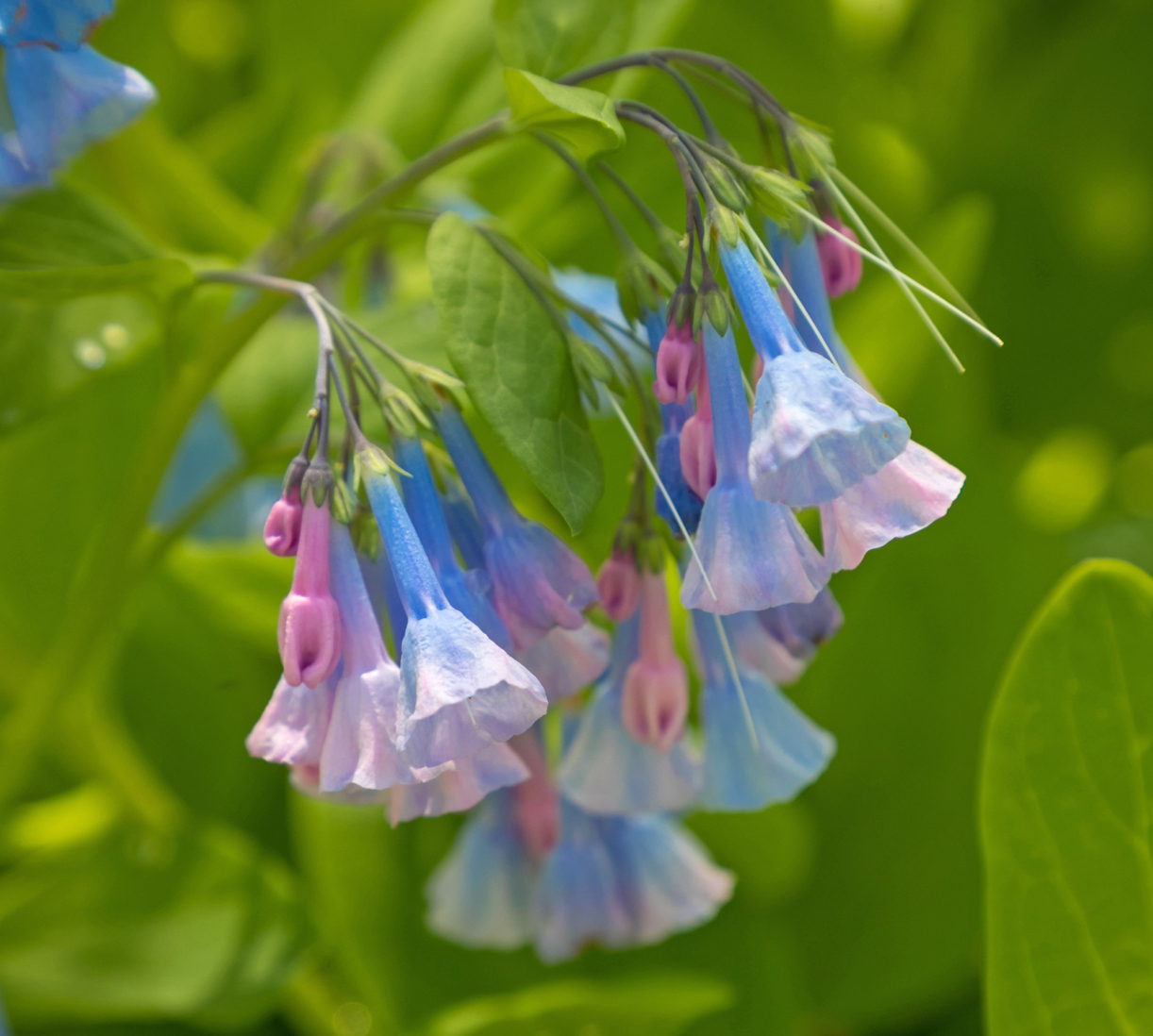
When the flower buds first appear, on plants a foot or more tall with soft, floppy green leaves, they are pink or purple. The buds mature into clusters of blue blooms like long tubes ending in bells. In parts of the East Woods, Virginia bluebells carpet the woods in mid- to late spring. Their show lasts about three weeks. The botanical name is Mertensia virginica.
Prairie Trillium
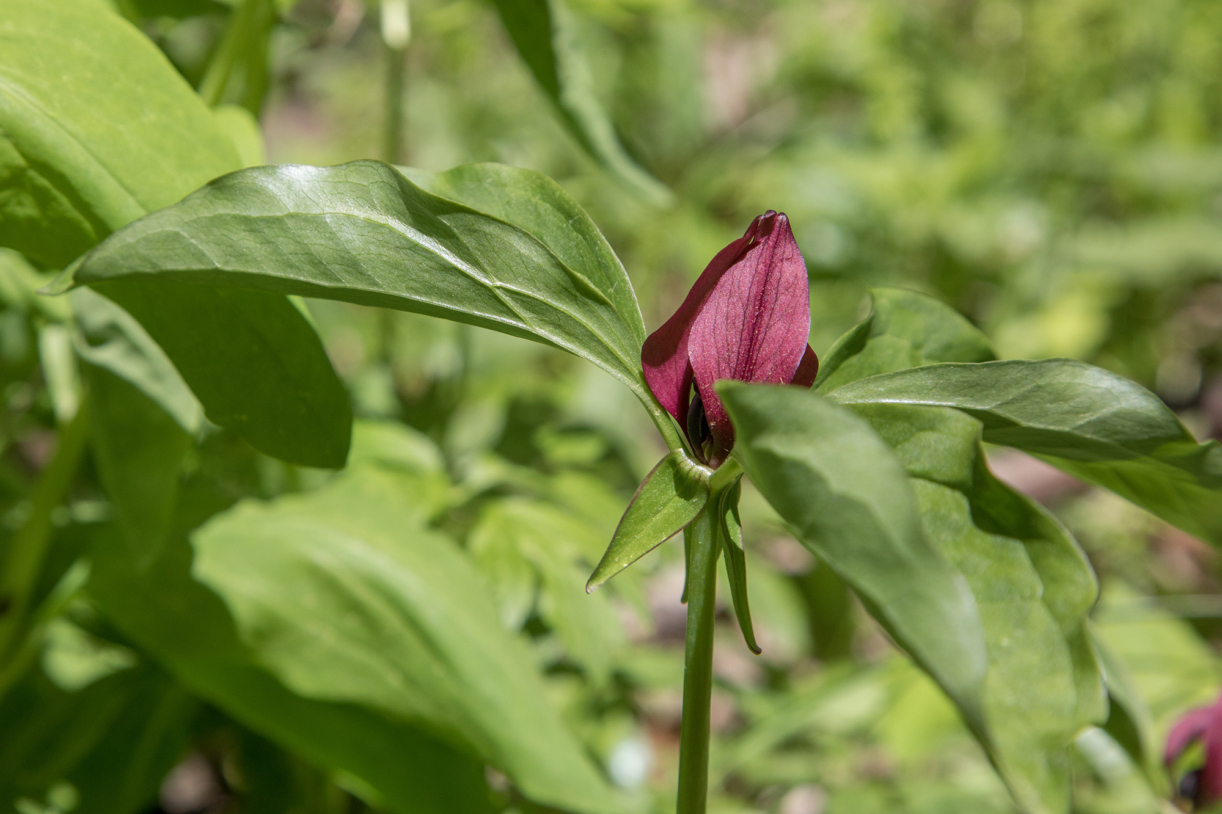
This subtly striking flower has three maroon petals above leaves that are heavily mottled with light and dark green. The flower is most often seen with the three petals curving inward to meet at their tips, although sometimes they open more widely. The plant blooms in mid- to late spring for about three weeks. The botanical name is Trillium recurvatum.
Jack-in-the-Pulpit
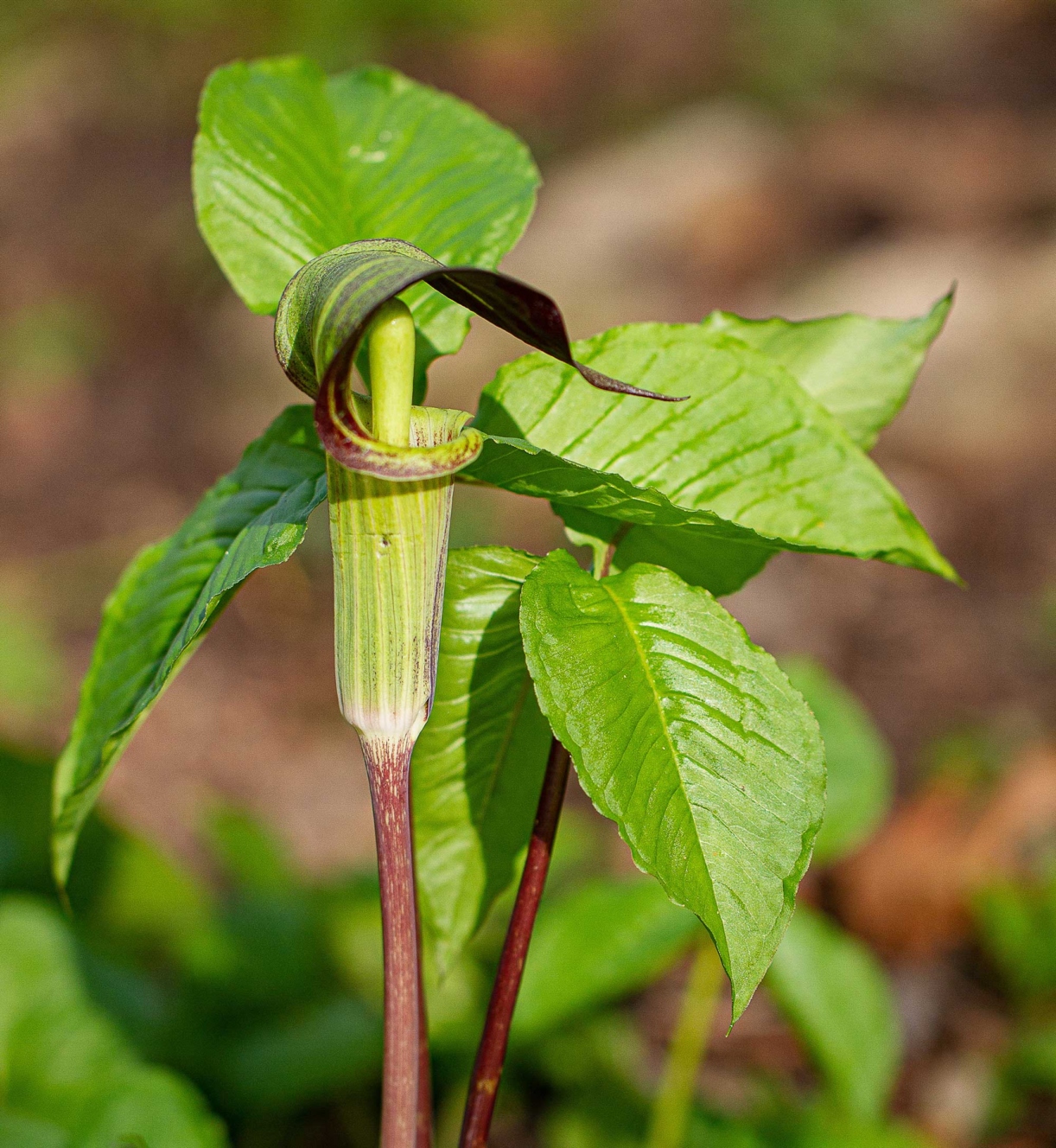
If you look at this plant’s unusual bloom, you may be able to imagine a preacher speaking from a pulpit. On a 1- to 2-foot-tall plant, a large green leaf curves to create a roof over a spadix, or standing stalk of tightly packed flowers. Jack-in-the-pulpit blooms for about two weeks in mid- to late spring. Jack-in-the-pulpit is not strictly ephemeral: the foliage lasts longer than the flowers, and eventually, the flowers on the spadix mature to bright red fruits. The botanical name is Arisaema triphyllum.
Great White Trillium
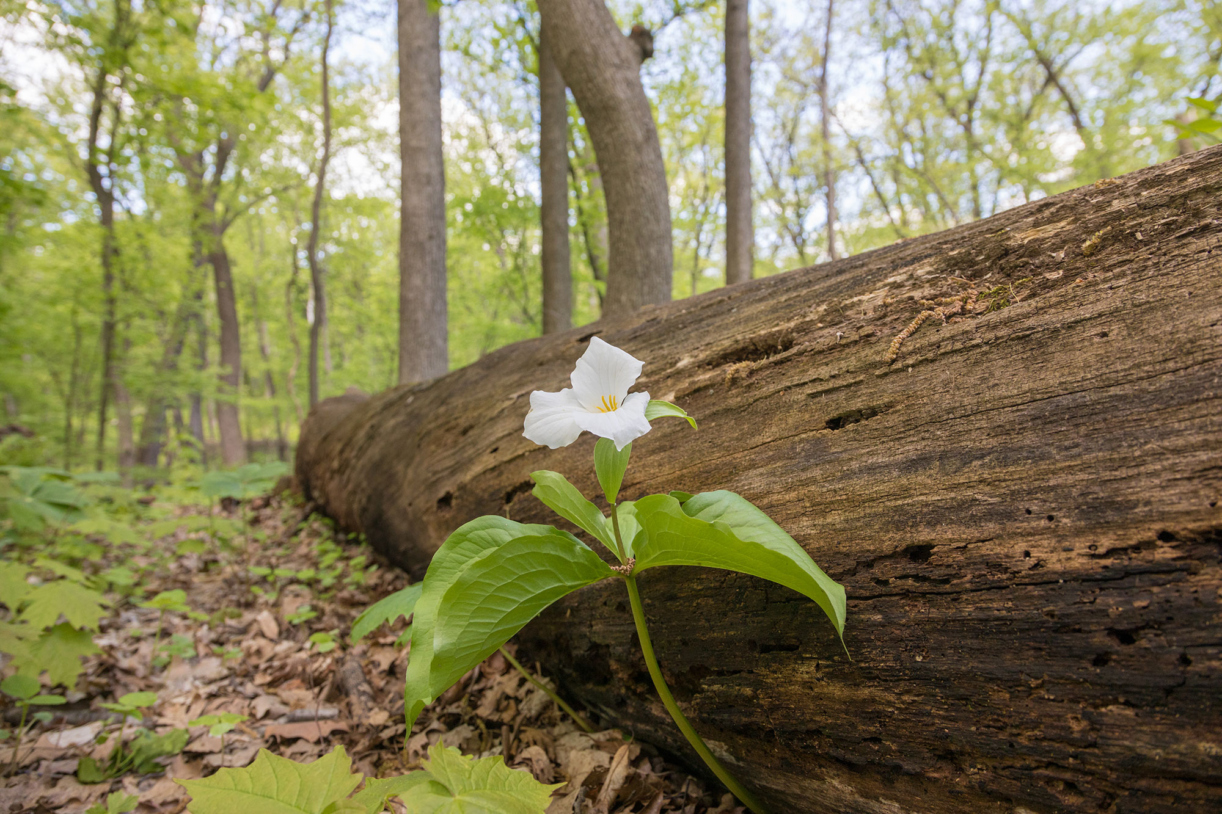
Each bloom of this plant, one of the most charismatic wildflowers, has three large white petals. The flower will usually face to one side, although it does not nod like a trout lily or bluebell. It stands on a stem several inches above three leaves. Great white trillium usually blooms in mid- to late spring and lasts about three weeks. The botanical name is Trillium grandiflorum.
Woodland Phlox
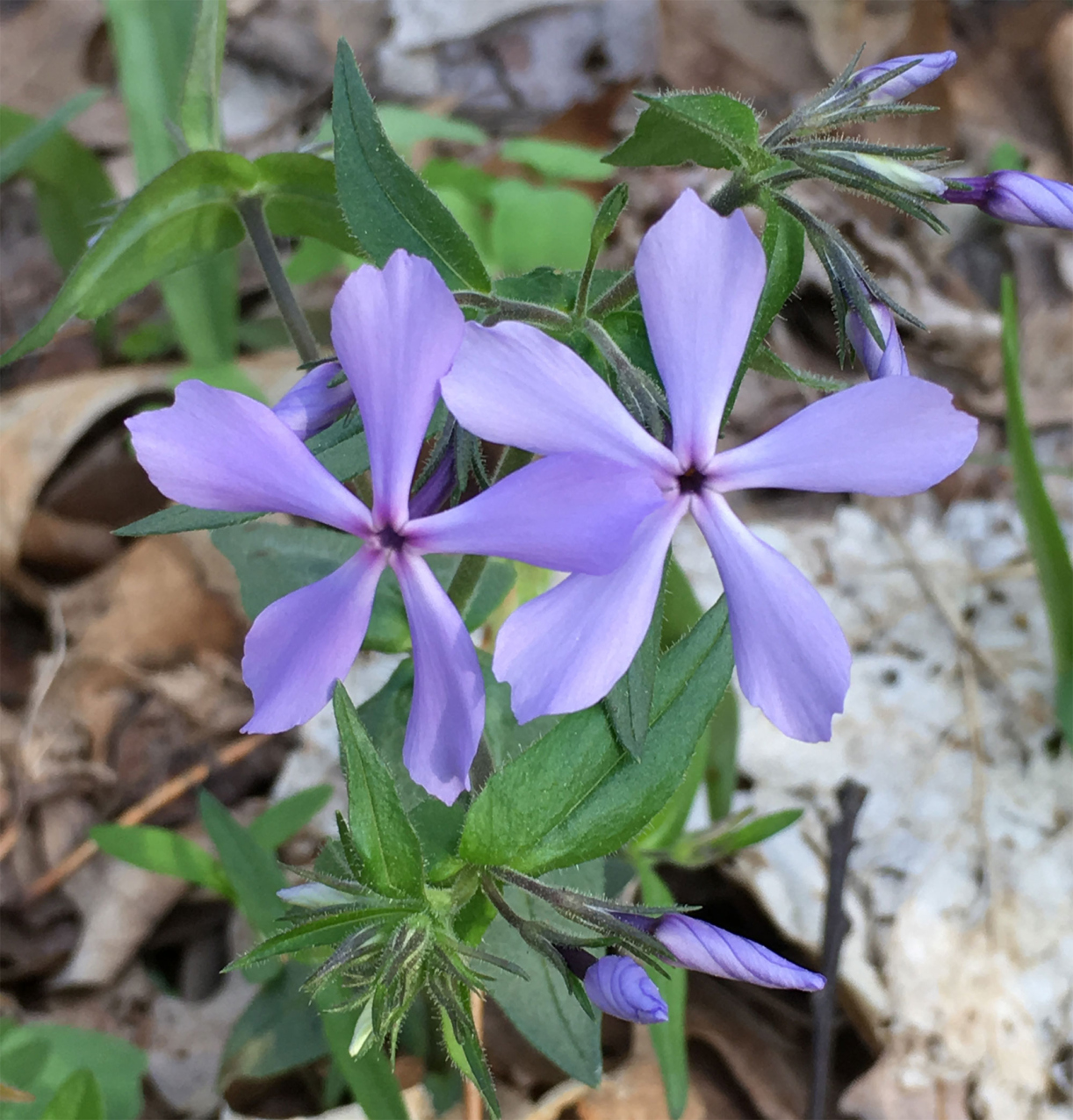
One of the last woodland wildflowers to appear, this plant has rounded clusters of flowers, light blue to lavender, on plants about a foot tall. It blooms in late spring to early summer for about a month. The botanical name is Phlox divaricata.
